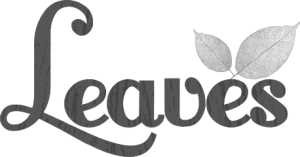What is gluten anyway?
Gluten is the elastic protein in wheat, rye, spelt and barley. It helps baked goods to rise and gives them their spongy texture. It’s the glue that stops pasta from breaking and gives loaves of bread a chewy texture.
Where is it found?
It’s common knowledge that bread and other baked goods contain gluten. But where else is it lurking? Gluten can also be used to bind sauces in pre-packaged foods and contained in other things such as: soy sauce, chocolate, ready-made soups and even alcohol! While these may not always contain gluten, if you are celiac you really need to check the label to be sure.
Should I avoid it?
The people who really need to avoid gluten are those who suffer from celiac disease. If you think you may have celiac disease, you’ll need to get tested by your doctor. Consuming gluten when you are celiac can damage the small intestine, causing it to become inflamed. It can also cause weight-loss and malnutrition due to the malabsorption of vital nutrients. This is why it’s vital for those who have been diagnosed to follow a gluten-free diet.
Other people may suffer from gluten intolerance/sensitivity. In recent times, with so many people going gluten-free or claiming to be gluten intolerant, there is some scepticism regarding what “gluten sensitivity” really is and if it really exists or not.
In an article for WebMD, Stefano Guandalini, MD and director for the University of Chicago Celiac Disease Center says “these patients absolutely do exist…[and] they do have real symptoms”.
However, there’s no exact medical test for gluten intolerance. Diagnosis is based on the presence of symptoms and their improvement when a gluten-free diet is followed.
Why is gluten-free becoming so popular?
Gluten-free seems to have become somewhat trendy in recent times, with many people trying gluten-free diets and claiming to feel real benefit as a result. And while this may be true for some people, are we to believe that the numbers of people with gluten intolerance is dramatically rising or is some of it to do with the “nocebo effect”?
The nocebo effect is closely related to the placebo effect. It occurs when somebody takes a harmless substance and feels real harmful effects. This is due to the psychological expectation that such substance will do harm.
The nocebo effect is no joke, just as people have been miraculously cured with sugar-pills (placebo effect), the nocebo effect can cause symptoms like vomiting, headaches and dizzy spells! Never underestimate the power of suggestion! (Proof that little mindfulness and positive thinking can really go a long way.)
Nocebo effect or not, trendy or not, there are many people out there suffering from real symptoms who can really benefit from sticking to a gluten-free diet.
So I’ve decided to stay away from gluten… What should I eat?
If you think you may have celiac disease, you should be tested by your doctor before starting a gluten-free diet. Testing after you have already been avoiding gluten for some time may not produce accurate results.
If you’ve already been to your doctor or if you’d just like to try some gluten-free alternatives then read on…
Thanks to the rise in people following gluten-free diets, there are now loads of alternative options available for people. Before all this, the gluten-free section of your supermarket might have just been a few loaves of bread on a bottom shelf somewhere. Now it’s likely to take up most of an aisle. Tasty alternatives are now available and many people are trying gluten-free products because they perceive them to be good quality products. Whereas before they were only eaten by those who didn’t have any choice.
Healthy and natural alternatives include buckwheat, amaranth, quinoa and of course rice. The first three are all pseudo-cereals and can be used in place of wheat and other grains for a healthy meal, and rice is, well… rice. Varying your diet and including some of these different options can provide you with different vitamins, minerals and health benefits that you might otherwise miss out on.
It’s always great to include new things in your diet, not only from a health perspective but also to make things a bit more interesting. If you’re a keen cook or baker, it can be great fun to try and recreate some of your favourite recipes with different types of gluten-free flour and other healthier ingredients.
If you’re looking for something a little bit different don’t forget our Buckwheat and Truffle Pasta is naturally gluten-free. It’s also quick and easy to prepare!
Something to keep in mind: Although our Buckwheat and Truffle pasta is naturally gluten-free, it is produced in a kitchen that handles gluten, therefore it may contain traces.




Recent Comments